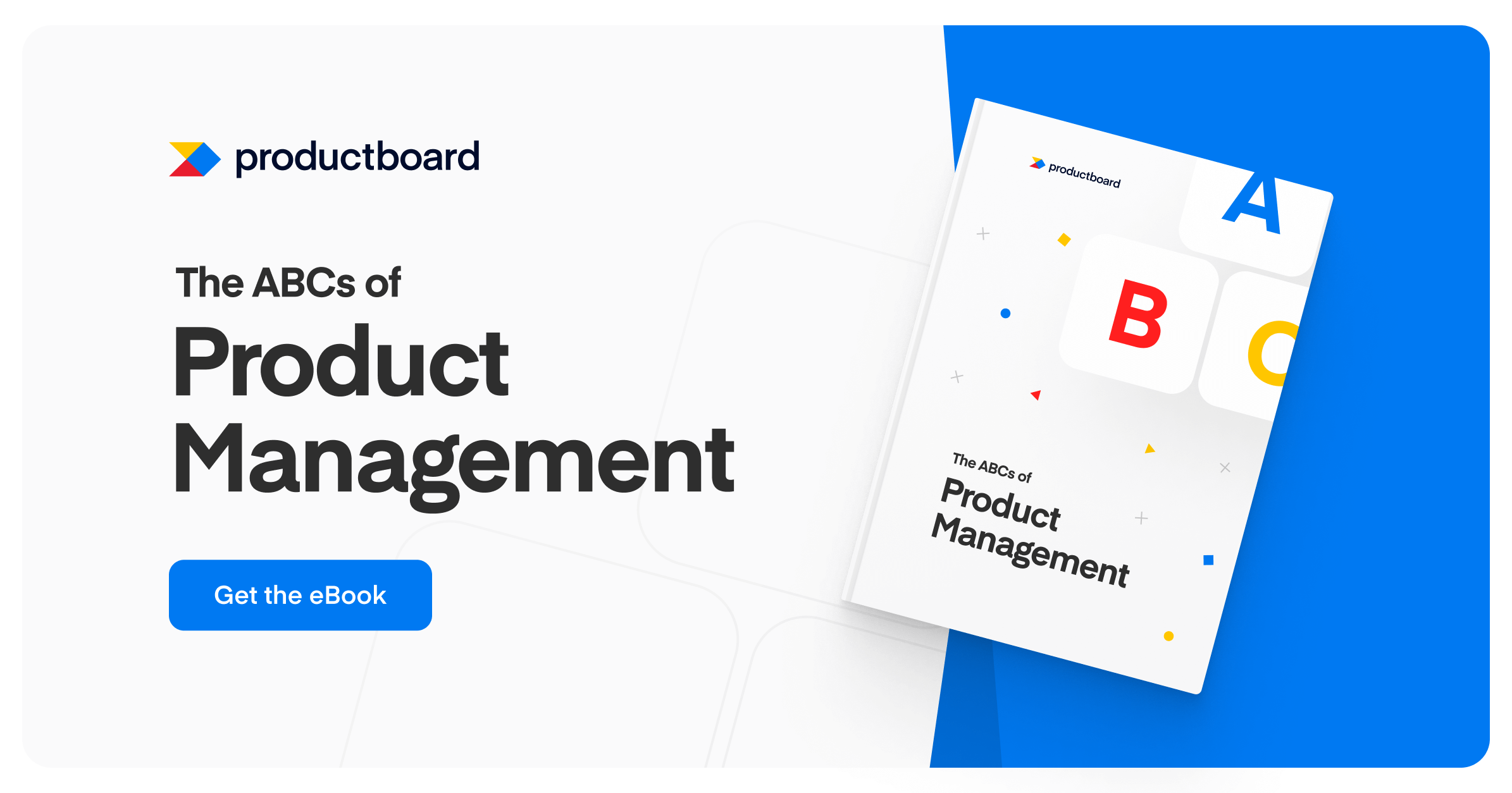If you want to be a designer, you go to design school. If you want to be an engineer, you get an engineering degree. If you want to be a product manager… well, where’s the school for that?
People who want to pursue a career in product management have traditionally had to find their own way to the discipline. There’s no clearly defined path to becoming a product manager, but there are some essential skills that every PM should have in order to be successful.
We’ve distilled the fundamental PM skills into a simple format that’s as easy as ABC:
- Arriving at a deep understanding of users
- Building an excellent product strategy
- Collaborating with cross-functional teams
- Defining your roadmap and rallying everyone around your plan
Let’s take a closer look at each skill and why it’s the building block of being a great PM.
A: Arriving at a deep understanding of users
At its core, product management is about solving a problem or meeting a need for your users. And you can’t do this without having a deep understanding of their goals, desires, motivations, and frustrations.
Aron Tremble, VP of Product at Thinkific, says, “Curiosity to understand customers and their behavior is one of the top skills that’s instrumental to being a good product manager.”
Beyond cultivating curiosity, there are a few steps you can take to arrive at a deep understanding of your users. For example, you can complete an audit of your existing product inputs. Taking note of everywhere you receive feedback ensures that nothing important slips through the cracks and gets you one step closer to a holistic overview of your insights landscape.
Similarly, you can commit to regularly interfacing with customer-facing teams so they can share all the great insights they’re hearing directly from customers. You can schedule your own conversations with customers and prospects (preferably every week) to understand their core problems, how those problems are being solved today, and what an ideal end state looks like. And you’ll want to consolidate all these product inputs into a single place.
A system like Productboard can serve as a central searchable repository that allows product teams to have continuous access to fresh insights.
Download The ABCs of Product Management eBook to learn more about understanding your users’ needs. 👇

B: Building an excellent product strategy
We can’t simply say yes to every request that comes our way—this would quickly become untenable. Nor can we just say yes to the loudest or most influential people who come to us with suggestions. This option, while tempting, doesn’t always align with our product or business goals. This is why Productboard Senior Product Manager Sophie Lalonde argues for the importance of creating a strategic and systematic approach to prioritization.
That’s where product strategy comes in. A good product strategy outlines how you plan to address your users and their needs. It provides a framework that guides the allocation of resources. Done well, it steers your team towards a set of shared priorities.
The building blocks of an effective product strategy
While every product strategy looks a little different, sound product strategies do share some common elements:
- A vision statement summarizes an ideal future state of your product and how it contributes to the overall company mission. It should be short and simple enough for everyone on your team to understand, repeat, and share.
- The timeframe of your strategy is how long you need to accomplish your goals. This window varies depending on your company’s industry and maturity.
- Business objectives tie your strategy to the bigger picture and articulate how your plans will advance business goals.
- A well-defined audience, perhaps an ideal customer profile (or profiles), ensures that everyone knows exactly who you are optimizing your efforts for.
- Your product objectives are the key problems you’ve decided to solve—different areas of investment your product team will ultimately focus on. Objectives provide a roadmap for teams to rank and prioritize features and fixes that make sense for what you’re trying to achieve. Uniting your team around objectives empowers them to problem solve on their own.
- Measurable outcomes and metrics help you stay outcome-driven and track the progress you’ve made towards your objectives. At Productboard, for example, we track weekly active makers and weekly active contributors.
- Tactics are more granular initiatives that will help you advance your product and achieve your objectives.
Download The ABCs of Product Management eBook to learn more about how to build an excellent product strategy.👇

C: Collaborating with cross-functional teams
Product management is not a solo task. Within the product org, PMs work side-by-side with design and engineering. Beyond the product org, PMs partner with marketing, sales, support, executives, and more.
It’s a rewarding job. You get to build things together—taking something you've imagined and turning it into real value for your users. But working with so many different stakeholders does come with its challenges.
This is why communication and collaboration are fundamental skills for PMs. Misha Abasov, VP of Product at Rise says that communication is not just about getting your team excited about the direction you’re headed in, but also knowing how to ask the right questions so you can understand the situation and your customers’ needs.
There are two important ways to achieve this. The first is learning what drives your stakeholders. This is an essential soft skill that will help you figure out how to communicate in ways that folks across the organization will hear, appreciate, and understand. The second is involving your stakeholders early and often, whether it’s by inviting them to meetings, sharing recordings, or holding regular roadmap presentations and Q&As in front of the company.
Download The ABCs of Product Management eBook to learn more about effective collaboration strategies.👇

D: Defining your roadmap and rallying everyone around your plan
“Great product leaders are very good at helping sales teams better communicate the product’s purpose and vision,” says Richard Steers, Chief Product Officer at ROLLER Software. “But if there’s a void and we don’t set expectations, then people will set their own expectations and that’s when the requests get quite loud.”
Effective product leaders ensure that product management is not a black box. They don’t just share their plan—they rally everyone around a common vision for where the product is headed and why. And a well-defined roadmap is their communication tool of choice.
That being said, roadmaps mean different things to different people. To make communication more efficient, product managers can create tailored roadmaps that provide just the right amount of detail for each stakeholder. Ideally, stakeholders should be able to access self-serve roadmaps and trust that they’re always up-to-date.
There are many benefits to this transparent approach. When you share your plans, you get feedback from a huge range of stakeholders. This turbo-charges your product discovery process, helping you crowdsource new problems or look at existing problems in a new light. And, when folks are looped in early, it’s easier to earn buy-in down the road.
Download The ABCs of Product Management eBook to learn more about creating an inspiring product roadmap.👇

Now you know your ABCs (and Ds)! To recap what we’ve covered, being an excellent PM revolves around the core concepts of:
Arriving at a deep understanding of user needs (by identifying where feedback is coming from, creating regular touch points with customers, and centralizing all inputs in a single, easily accessible location).
Building an excellent product strategy (championing the voice of the customer while also advancing broader business goals and doing it all with limited resources and time).
Collaborating with cross-functional teams (taking the time to understand your stakeholders and then speaking in the language that resonates with them the most).
Defining your roadmap and rallying everyone around your plan (using the right format for the right audience and making sure it’s available when they need it).
You won’t always get it right every time—another key part of being a successful PM is being open to experimentation and having the humility to seek help and feedback from others. Aim for progress rather than perfection and you’ll be heading in the right direction.
The good news is that Productboard is here for you every step of the way. Want to learn more about how we can help you in your journey to put these concepts into practice? Start your free trial today!



 Follow us on LinkedIn
Follow us on LinkedIn




